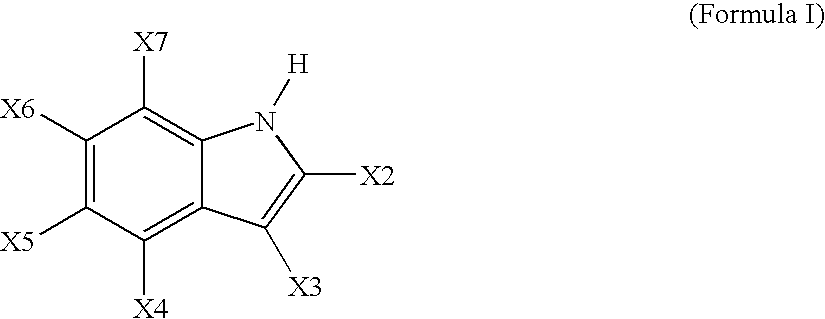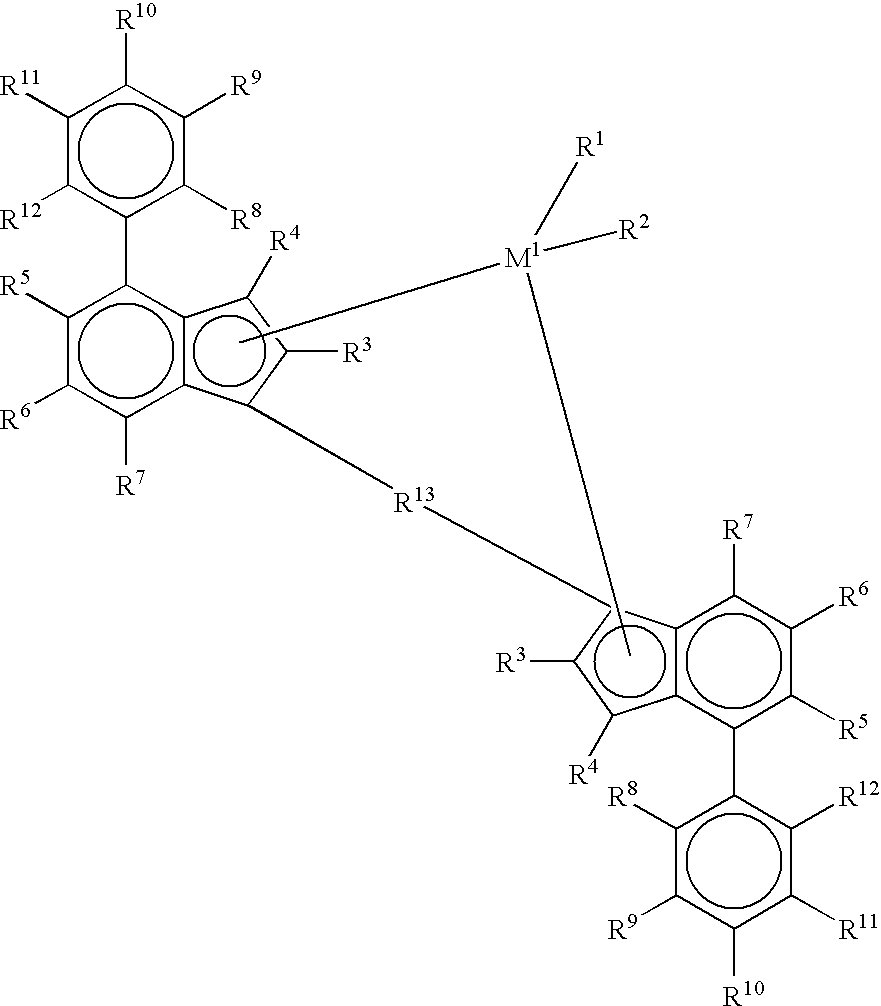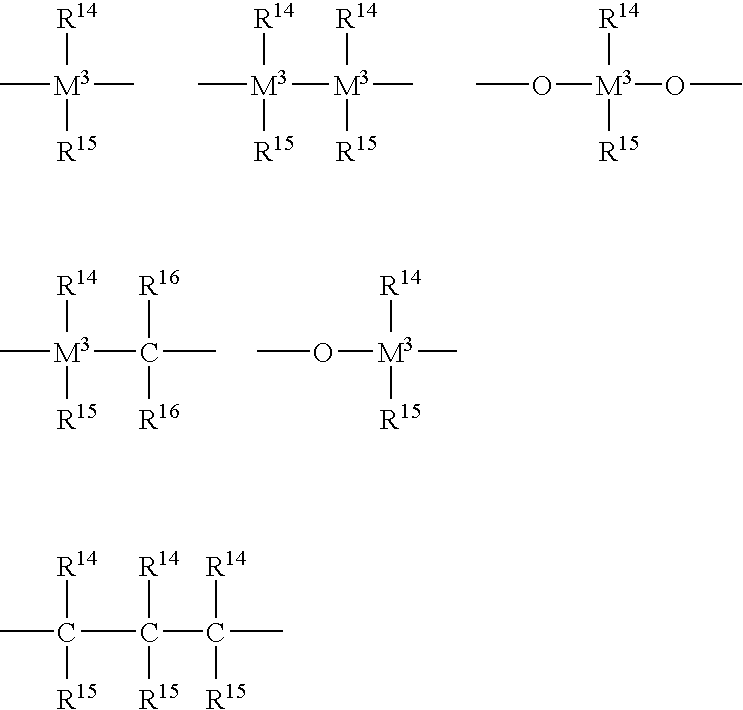Preparation of polymerization catalyst activators utilizing indole-modified silica supports
a technology of indole modified silica and catalyst, which is applied in the field of supported catalyst systems, can solve the problems of high catalyst production cost, high catalyst yield, and high cost of catalyst synthesis, and achieve the effects of low catalyst loading, good molecular weight, and high catalyst yield
- Summary
- Abstract
- Description
- Claims
- Application Information
AI Technical Summary
Benefits of technology
Problems solved by technology
Method used
Image
Examples
example 1
[0752] In a drybox, 105 grams of freshly dehydrated 952× SiO2 (200° C., 6 hr) and approximately 300 mL of anhydrous toluene were added to a 500 mL Celstir flask equipped with a overhead magnetic stirrer. While stirring the slurry at room temperature, triethylaluminum (TEAL) solution (43.0 g, 0.377 mole) was slowly added dropwise. Upon addition of the TEAL solution, the flask became warm. The stirring was continued for 12 hr at room temperature. The slurry was filtered using a fritted funnel, washed with toluene (2×75 mL) and pentane (1×75 mL) and dried in vacuo overnight (˜15 hr). TEAL-treated silica samples were recovered in >90% yield and used immediately.
[0753] In a drybox, 115 grams of the TEAL-treated silica and 350 mL of anhydrous o-xylene was added to a 500 ml Celstir flask equipped with an overhead magnetic stirrer. To the stirred slurry was added an o-xylene solution of 4,5,6,7-tetrafluoroindole (20.95 g, 0.111 mole). After stirring for 15 minutes at room temperature, the ...
PUM
| Property | Measurement | Unit |
|---|---|---|
| Temperature | aaaaa | aaaaa |
| Temperature | aaaaa | aaaaa |
| Pressure | aaaaa | aaaaa |
Abstract
Description
Claims
Application Information
 Login to View More
Login to View More - R&D
- Intellectual Property
- Life Sciences
- Materials
- Tech Scout
- Unparalleled Data Quality
- Higher Quality Content
- 60% Fewer Hallucinations
Browse by: Latest US Patents, China's latest patents, Technical Efficacy Thesaurus, Application Domain, Technology Topic, Popular Technical Reports.
© 2025 PatSnap. All rights reserved.Legal|Privacy policy|Modern Slavery Act Transparency Statement|Sitemap|About US| Contact US: help@patsnap.com



